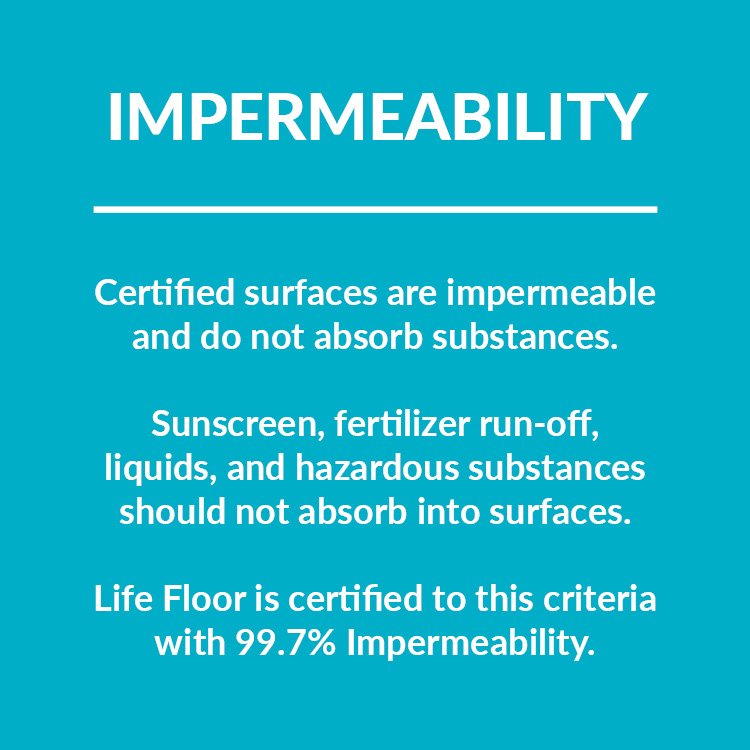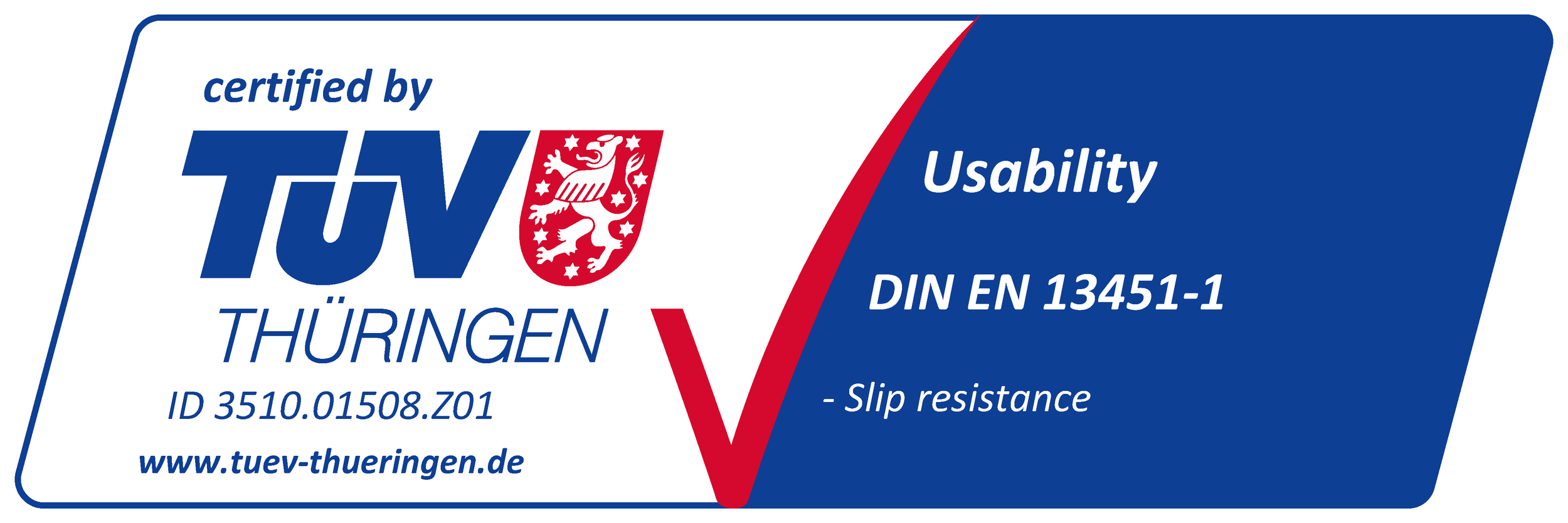CERTIFICATIONS
As the first safety surfacing engineered specifically for aquatics, Life Floor believes in regularly testing and improving our products in the spirit of continuous innovation. Since our brand was established in 2011, a central part of our mission has been to reduce and eliminate injuries across all of our projects. We’re proud of our 3,000+ installations in over 45 countries around the world.
We believe in doing the right thing and we're driven by the needs of all guests who interact with our flooring. Creating unique solutions that support aquatic recreation are important to us and safety is a central tenet of that purpose. We share our certifications and testing data to provide partners and customers with the transparent resources needed to make informed decisions about investments and product choices.
CERTIFIED AUTISM RESOURCE
We believe in making aquatic facilities safe and beautiful for all people regardless of age or ability. In alignment with our mission and core values, Life Floor is certified by IBCCES as a Certified Autism Resource. Our products meet one or more Areas of Autism Competency and can be used at Certified Autism Centers worldwide.
NSF/ANSI/CAN STANDARD 50
Understanding the danger that concrete and other surfaces can pose in aquatic environments, NSF/ANSI/CAN 50:26 recommends all splash pads and pool perimeters feature certified safety surfacing.
Life Floor is the first splash pad surface certified by NSF/ANSI/CAN 50.
Splash Pads
Splash pads are playgrounds with water. As part of the certification process, our tiles are third-party tested to demonstrate slip-resistance and impact cushioning for improved safety. They also show aquatic durability after passing tests for UV resistance, chemical resistance, impermeability, and cleanability.
NSF/ANSI/CAN 50 concluded that for a surface to meet an appropriate standard for splash pad surfacing, it must fulfill six unique performance-based requirements. Life Floor is certified to all six requirements:
Pool Perimeters
Published in 2024, the pool perimeter standard is similar to the version for splash pads. The primary differences are that this variation does not require surfaces to be cushioned and the testing criteria only applies to non-concrete surfacing materials.
As part of the certification process for pool perimeter surfaces, our tiles are third-party tested to demonstrate slip-resistance for improved safety. They also show aquatic durability after passing tests for UV resistance, chemical resistance, impermeability, and cleanability. Life Floor is certified to the standard and meets or exceeds all 5 requirements.
IMO CERTIFICATION
IMO Certification is a fire safety rating for flooring which means it’s approved for use in both indoor and outdoor applications on cruise ships. This certification is important for identifying which products can be used onboard.
IMO Certification has contributed to Life Floor’s installation on aquatic amenities for more than 50 vessels since 2011.
Life Floor is IMO Res. MSC.307(88) – (2010 FTP Code) Annex 1 Part 2 and Part 5 Certified.
“Life Floor is compliant for use on ships and offshore installations classed with Lloyd’s Register, and for use on ships and offshore installations when authorised by contracting governments to issue the relevant certificates, licences, permits, etc.”
DIN EN 13451-1:2016-12 CERTIFICATION
Life Floor is certified for Slip-Resistance in accordance with DIN EN 13451-1:2016-12 through Technischer Überwachungsverein (TÜV). The association is an independent company that tests, inspects, and certifies products and systems to prevent damages. Highly recognized worldwide as a trademark of trust and quality, a TÜV certification ensures a product complies with the requirements of national, regional, or international regulations.
Through the identification of statutory regulations, assessment of qualified trainers, selection of methodology and examination approach, and development of examinations with expert examiners in their fields, the result assures consumers that the product has been checked thoroughly for any defects or potentially dangerous materials.










